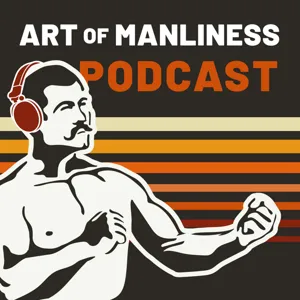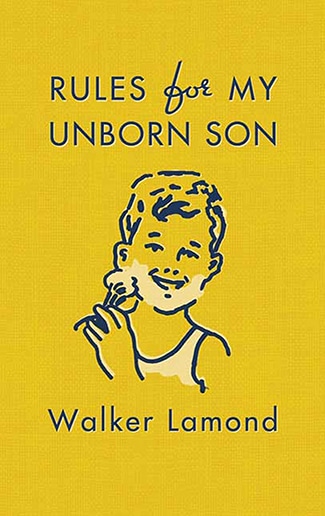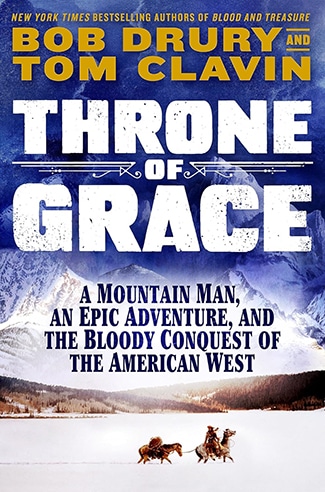Podcast Summary
Three Types of Failure: Adaptive, Generative, and Maladaptive: Understand the type of failure, adaptive, generative or maladaptive, to respond effectively and create a matrix to approach potential setbacks.
Failure is not a monolithic concept, but rather comes in three distinct forms. According to Amy Edmondson, a professor at Harvard Business School, there is adaptive failure, generative failure, and maladaptive failure. Adaptive failure is when we encounter setbacks and learn valuable lessons from them, leading to growth. Generative failure is when we take calculated risks and experience unexpected success. Maladaptive failure, on the other hand, is when we make avoidable mistakes, leading to negative consequences. The key is to understand which type of failure we're dealing with and respond accordingly. For instance, in high-risk industries, it's crucial to minimize maladaptive failure, while in creative environments, generative failure can be beneficial. By recognizing and categorizing different types of failure, we can create a matrix to help us approach potential setbacks more effectively. Ultimately, failure is not something to be feared, but rather an opportunity for growth and learning.
Intelligent failures: The right kind of wrong: Embrace calculated risks for significant rewards, even if it means experiencing intelligent failures in new territories
Not all failures are created equal. Intelligent failures, as described in the book, are worth embracing as they are the right kind of wrong. These failures occur when we're pursuing a goal in new territory, have done our research, and accept the risk with the understanding that the potential payoff is significant. An example of this is the early attempts at open heart surgery, where the risks were high, but the potential rewards were even greater. However, the aversion to failure and the fear of social stigma often hold us back from making these intelligent failures. By being more open to taking calculated risks, we can learn, grow, and ultimately achieve great successes.
Creating a psychologically safe environment: Speaking up, disagreeing, and admitting errors without fear of embarrassment or humiliation are crucial for team performance and problem-solving. Building strong relationships and open communication fosters a psychologically safe environment essential for personal and professional growth.
Psychological safety plays a crucial role in enabling individuals and teams to take interpersonal risks, learn from mistakes, and innovate. This concept refers to an environment where people feel safe to speak up, disagree, and admit errors without fear of embarrassment or humiliation. A study once showed that teams with stronger relationships and camaraderie were not making more mistakes, but rather, they were more open about their errors. This openness is essential for team performance and problem-solving. In personal relationships, the same concept applies. Couples who never argue or disagree might have underlying issues, as it's essential to raise concerns and work through conflicts to maintain a healthy relationship. In summary, creating a psychologically safe environment is vital for fostering open communication, learning from mistakes, and promoting growth in both personal and professional contexts.
The Importance of Disagreements and Failures in Healthy Relationships and Ventures: Disagreements and failures are natural parts of healthy relationships and ventures, promoting growth through intelligent experimentation and learning from basic errors.
Healthy relationships involve disagreements and conflicts, and the absence of these signs might indicate unspoken fears or unwillingness to communicate openly. In the realm of experimentation and failure, intelligent failure refers to new ventures with small hypotheses, minimizing risk through incremental steps. Basic failures, on the other hand, are preventable errors caused by human mistakes, and can range from small to massive consequences. Both types of failure are important to understand in various aspects of life, whether in relationships or business endeavors.
Learning from Basic Failures vs. Intelligent Failures: Checklists help prevent basic failures by ensuring important tasks aren't overlooked, but they must be used with intent to be effective.
While we can learn from basic failures, the amount of learning is typically less compared to new or intelligent failures. Basic failures, such as texting while driving, can lead to clear lessons, like not doing that particular action again. However, to prevent these types of failures, creating systems or protocols, like checklists, can be effective. Checklists, which have been used in industries like aviation and healthcare, help ensure important tasks are not overlooked, even when people are busy or distracted. However, simply having a checklist is not enough; it must be used with intent. A tragic example of this is the Air Florida Flight 90 accident, where the pilots went through the checklist but failed to follow the correct procedure for anti-icing, leading to the death of 78 people. Creating and using checklists for regular tasks can help prevent basic failures and ensure important items are not overlooked.
Combination of multiple factors causing complex failures: Complex failures are not caused by a single factor but rather by a combination of multiple factors interacting with each other
Complex failures are not caused by a single factor but rather by a combination of multiple factors interacting with each other. An example of this is a hospital incident where a young patient was given an overdose of morphine due to a series of unfortunate events, including a full ICU, less specialized caregivers, a new nurse, a hard-to-read pump, and a misprinted concentration. Each factor alone would not have led to the accident, but their convergence created a perfect storm. This concept is similar to the military strategist Klaus Witz's idea of friction, where numerous minor incidents accumulate to significantly impact performance. Complex failures, like the Tory Canyon environmental spill or everyday life inconveniences, demonstrate that it's not just one thing that causes problems, but a combination of various factors.
Complex failures offer opportunities for prevention: Complex failures can be prevented through early detection, course correction, psychological safety, and contingency plans.
Complex failures, despite their daunting nature, often provide opportunities for prevention through early detection and course correction. The increase in complexity and interconnectedness in our modern world, such as information technology and global supply chains, make us more susceptible to these failures. However, not all complex failures come as a surprise. Many have warning signs that go unnoticed due to the lack of psychological safety, where individuals do not feel safe to speak up about their concerns. High reliability organizations have shown that with the right management practices, such as vigilance, mindfulness, teamwork, and psychological safety, even the most complex and interconnected systems can operate safely. Additionally, having contingency plans in place can help mitigate the impact of complex failures.
Importance of backups and loose coupling in preventing complex failures: Implementing multiple backups and loose coupling can help prevent complex failures by reducing risk of data loss and allowing for correction if a failure occurs.
Having multiple backups and minimizing tight coupling are crucial for preventing complex failures. The speaker shared his experience of implementing multiple backups for his podcast recordings to reduce the risk of data loss. He also discussed the concept of tight and loose coupling in complex systems, with tight coupling referring to highly interconnected systems where an action in one part leads to an inexorable result in another, making it difficult to stop once initiated. An example of this is the Citibank employee transferring $800 million in a tightly coupled system. Loose coupling, on the other hand, provides some slack and allows for correction if a failure occurs. The speaker suggested applying this concept to our daily lives by building in buffers and slack to accommodate for unexpected delays or issues. Most of us don't have enough of these buffers to operate effectively, so deliberately building them in can help us operate more efficiently and effectively.
Understanding different types of failures and taking accountability: Focus on taking accountability for actions and contributions to failures to promote growth and learning, rather than blaming others.
Understanding and overcoming our tendency to blame others for failures is crucial for personal and organizational growth. According to the discussion, we've all experienced different types of failures - intelligent, basic, and complex. While it's natural to want to blame someone else for mistakes, this instinct is unhelpful for learning and growing. Instead, we should focus on taking accountability for our actions and contributions to the failure. This mindset shift is essential for creating a culture of psychological safety and continuous improvement. By fully accounting for what happened, we can learn valuable lessons and prevent similar failures in the future. It's important to note that this doesn't mean excusing malicious behavior or neglecting consequences for wrongdoing. Instead, it's about approaching accountability as an opportunity for growth and learning.
Reframing Failure: Learning from Mistakes: Approach unintentional mistakes with empathy, understand context, challenge biases, and adopt a scientific approach to learn and improve.
Understanding and reframing failures can help individuals and organizations learn and grow. The speaker emphasizes that it's essential to distinguish between intentional and unintentional mistakes and to approach the latter with empathy and a desire to understand the context. Reframing failure means challenging our unconscious biases and assumptions, and considering alternative perspectives. The context of a failure, including the level of uncertainty and stakes involved, is crucial in determining how to respond. By adopting a scientific approach to failure, we can focus on learning and improvement rather than blame and punishment.
Practicing failure in new situations: Persist, reflect, be accountable, and apologize to learn from failures in uncertain situations
In high-stakes situations, it's crucial to be mindful and vigilant, but in new and experimental situations, careful experimentation is key. Persistence, reflection, accountability, and apologies are essential failure practices to help us learn from our mistakes and improve. Persistence allows us to keep trying despite obstacles. Reflection involves explicit and systematic learning from our experiences. Accountability means owning our role in failures and learning from them. Apologies show that we care about relationships and can help repair damage caused by mistakes. By implementing these practices, we can thrive as fallible human beings in an uncertain world.
Embrace the 'right kind of wrong' for growth: Express remorse, take accountability, celebrate failure, and foster a culture of learning and resilience.
Expressing remorse and taking accountability for mistakes are crucial for personal and team growth. Individuals should own up to their mistakes, reflect on them, and make amends. Additionally, it's essential to create a climate where failure is celebrated as an opportunity to learn, rather than something to be feared or hidden. This can be achieved through collective practices, such as calling attention to the context, encouraging failure, and rewarding honesty. By embracing the "right kind of wrong," we can foster a culture of learning and resilience. Amy Edmondson, author of "Right Kind of Wrong," emphasizes the importance of these practices in both personal and professional settings. To learn more about her work, check out her website, AmyCEdmondson.com, or her podcast, "Failing Forward," available on the Art of Manliness website. Remember, it's essential to put these ideas into action and not just listen to the podcast.













